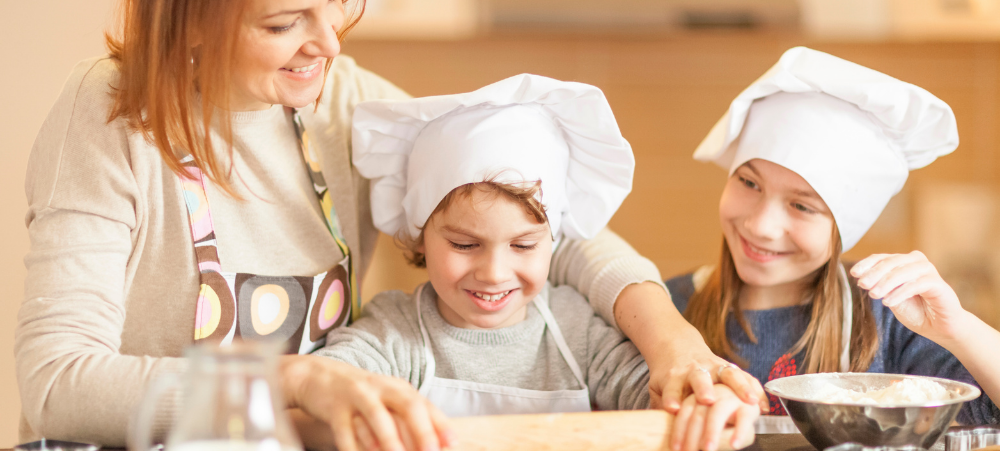Spending time in the kitchen and baking using new recipes helps children to develop a positive connection to all different types of foods. Children will also learn basic cooking skills that they can use for the rest of their lives.
For a hesitant eater, tasting an unfamiliar food can sometimes be intimidating. You can help your child explore foods when cooking using other senses besides taste. This helps to build positive associations with food. Kneading dough, rinsing vegetables, and tearing lettuce all involve touching food and being comfortable with texture. The complex flavours we experience when eating food come from both taste sensations from the tongue AND smelling with the nose. While cooking with new ingredients, some children may feel too overwhelmed to taste. If this happens, you can try suggesting smelling a food first; this may provide a bridge to tasting in the future.
Cooking with kids provides practical experience with many essential skills such as reading, following directions, and measuring. Getting involved in cooking helps your child to develop fine motor skills, eye hand coordination, and even early concepts of math and science.
Maths and Science:
There are so many lessons that can be taught while cooking. Math concepts like counting, measurement, and fractions naturally unfold when navigating a recipe with kids. Explaining how food changes with temperature or how certain foods can help our body be healthy provide great lessons in science. While cooking with your child, practice new vocabulary as you describe how food looks, feels, and tastes. Following a recipe from start to finish helps build the skills for planning and completing projects.
Bilateral Coordination
Developing good bilateral coordination skills can help children to tie shoelaces, cut with scissors and draw a line with a ruler. Baking can give your child many opportunities to develop and use their hands in a coordinated way. Rolling balls of dough, rolling out dough with a rolling pin, and flattening dough with their hands are all great ways to practice these skills. Sifting flour into a large bowl is also a good bilateral activity: it trains a child to use one hand to “support” while the other does the hard work.
Eye-Hand Coordination
Pouring ingredients into bowls and jugs and pouring batter into tins are all good ways for children to practice their eye-hand coordination. Decorating cookies with icing or putting icing on cupcakes also uses eye-hand coordination.
Hand Strengthening in Baking
Baking with kids can give children lots of opportunities to strengthen their hand and finger muscles. Squeezing dough into balls gets the hands working. Even sprinkling cheese on pizza bases can give their fingers a good workout!
Spatial Perception and Planning Skills
There should always be a recipe involved when baking with kids! Whether they read the recipe themselves (in words or in pictures) or follow your verbal instructions, following a recipe can boost your child’s listening and sequencing skills. Following instructions is an important school readiness skill, and baking can give your child lots of practice in this.
Helping your child to organize him/herself in the kitchen and clearing up their mess is also a helpful life-skill. Help your child take dirty dishes to the sink and “clean up as you go”, and then remember to pack all the ingredients away afterwards!
Spatial perception and planning skills are also boosted when your child must cut out cookies. Challenge your child to get as many cookies as possible from single roll-out of the dough – this will challenge your child to place the cookie cutters in a way that minimizes waste.
In addition, don’t forget how special it can be for a child to spend time creating memories with a caring adult. So, enjoy these special moments together!
By Jacqui Smallbone, Head of Academics at Crawford Pre-Primary Lonehill
- The importance of baking - September 28, 2023
- Uncharted Waters – Education - April 24, 2020
- Parents’ Role in the Online Learning Journey - April 15, 2020





